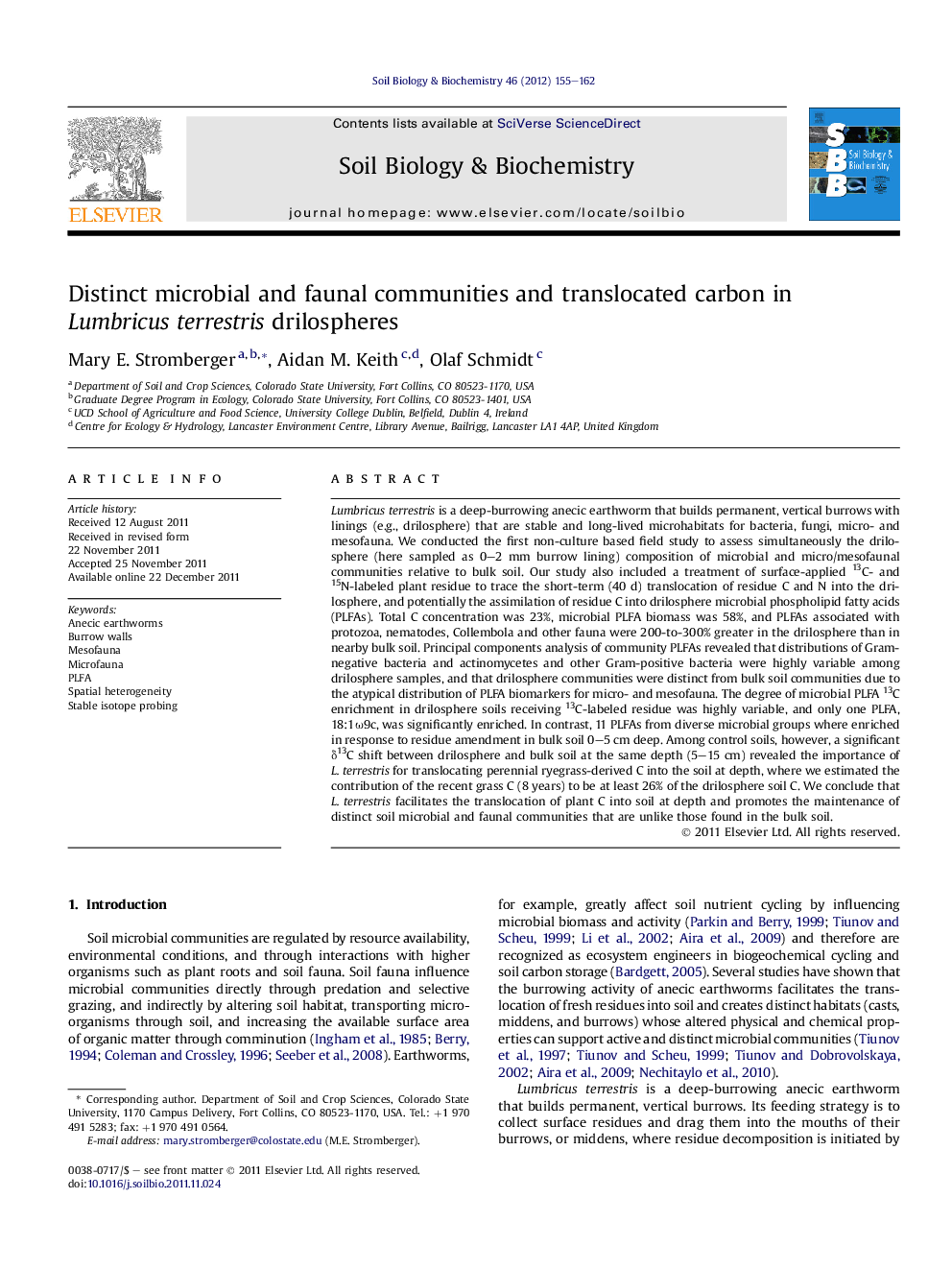| Article ID | Journal | Published Year | Pages | File Type |
|---|---|---|---|---|
| 2025018 | Soil Biology and Biochemistry | 2012 | 8 Pages |
Lumbricus terrestris is a deep-burrowing anecic earthworm that builds permanent, vertical burrows with linings (e.g., drilosphere) that are stable and long-lived microhabitats for bacteria, fungi, micro- and mesofauna. We conducted the first non-culture based field study to assess simultaneously the drilosphere (here sampled as 0–2 mm burrow lining) composition of microbial and micro/mesofaunal communities relative to bulk soil. Our study also included a treatment of surface-applied 13C- and 15N-labeled plant residue to trace the short-term (40 d) translocation of residue C and N into the drilosphere, and potentially the assimilation of residue C into drilosphere microbial phospholipid fatty acids (PLFAs). Total C concentration was 23%, microbial PLFA biomass was 58%, and PLFAs associated with protozoa, nematodes, Collembola and other fauna were 200-to-300% greater in the drilosphere than in nearby bulk soil. Principal components analysis of community PLFAs revealed that distributions of Gram-negative bacteria and actinomycetes and other Gram-positive bacteria were highly variable among drilosphere samples, and that drilosphere communities were distinct from bulk soil communities due to the atypical distribution of PLFA biomarkers for micro- and mesofauna. The degree of microbial PLFA 13C enrichment in drilosphere soils receiving 13C-labeled residue was highly variable, and only one PLFA, 18:1ω9c, was significantly enriched. In contrast, 11 PLFAs from diverse microbial groups where enriched in response to residue amendment in bulk soil 0–5 cm deep. Among control soils, however, a significant δ13C shift between drilosphere and bulk soil at the same depth (5–15 cm) revealed the importance of L. terrestris for translocating perennial ryegrass-derived C into the soil at depth, where we estimated the contribution of the recent grass C (8 years) to be at least 26% of the drilosphere soil C. We conclude that L. terrestris facilitates the translocation of plant C into soil at depth and promotes the maintenance of distinct soil microbial and faunal communities that are unlike those found in the bulk soil.
► The PLFA composition of the drilosphere was distinct from that of bulk soil. ► PLFA biomarkers for micro- and mesofauna were enriched in the drilosphere. ► At least 26% of drilosphere C was derived from recent grass inputs. ► Lumbricus terrestris facilitates the translocation of plant C into soil at depth. ► L. terrestris promotes spatial heterogeneity of soil microbial and faunal communities at the field scale.
